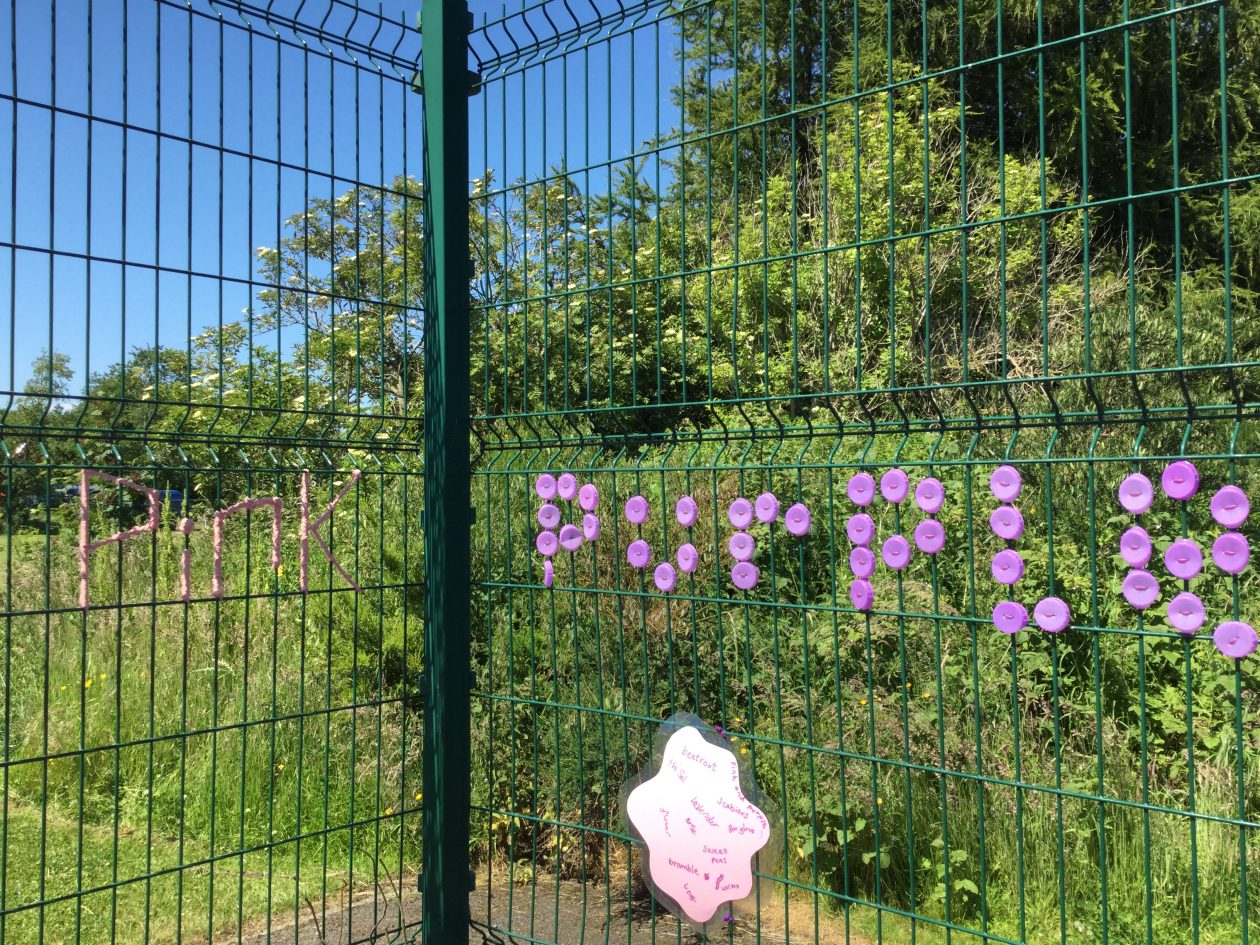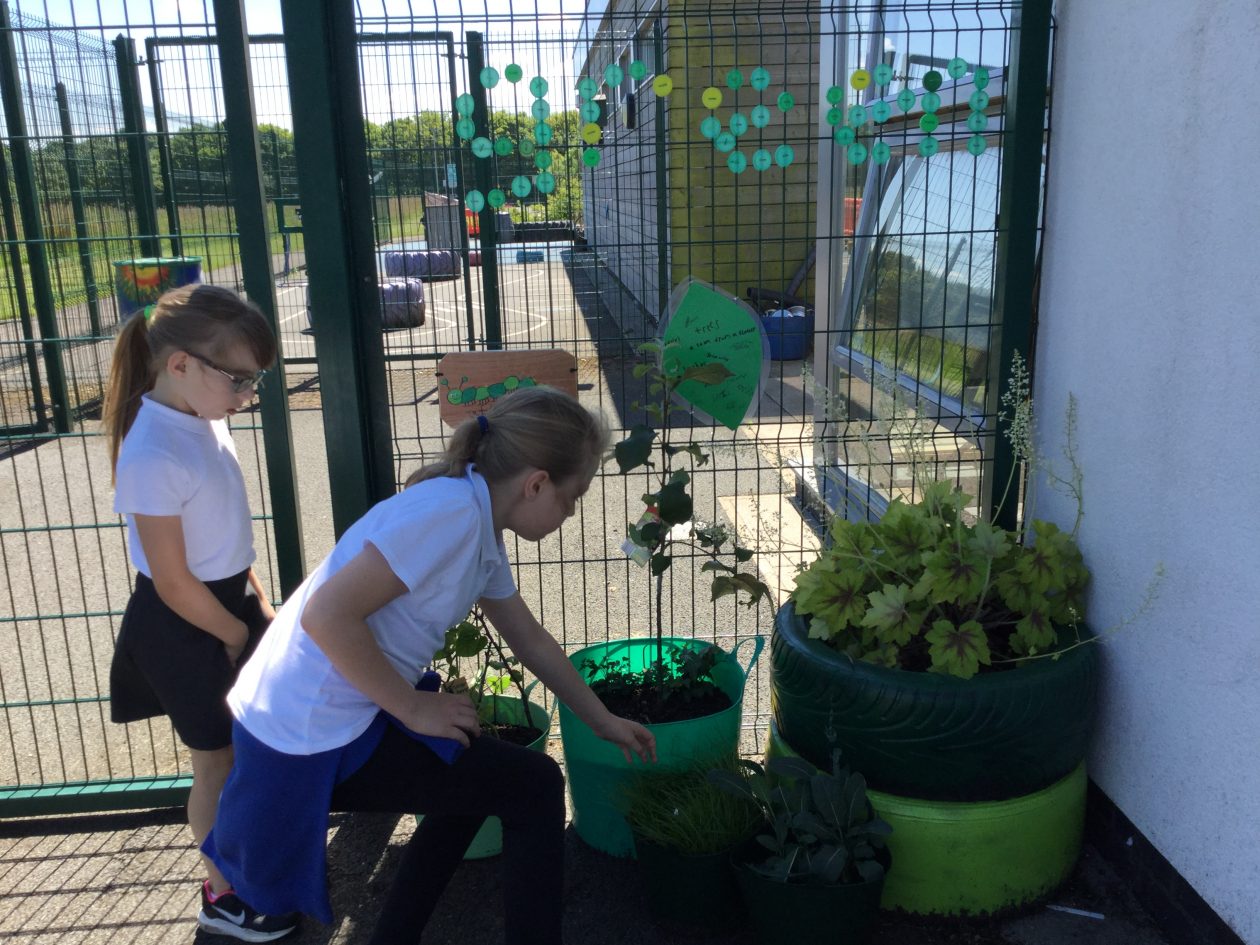P7 have been busy working on the foundations for the Anderson shelter we are building. The rain has made it a bit tricky!
Club Wild: Maths Week Scotland
Making Music in the Nursery
Our Award Winning Garden!
Last week judges from West Lothian Council visited our school to judge our school garden for the Primary School Gardening Competition.
We are delighted to announce that we received TWO awards!
- Decorative Garden
- Container Garden
This is a huge achievement for our school, and a tribute to the work of Sarah-Jane and our gardening club, a big thank you to them. Well done!
Our School Garden
Construction Play in our Nursery
Our nursery children have been building a house in the outdoor area using the sand and the tools.
https://vimeo.com/335178428
https://vimeo.com/335178449
https://vimeo.com/335178493
Pump Track Photo Shoot
Last week some of our children who are confident on the Pump Track volunteered (with permission from their parents) to take part in a publicity photo shoot for West Lothian Council.
Here are some of the photos below.
Remember! Safety first on the Pump Track, find some tips in this blog post.
Photographs courtesy of Paul Watt.
P4-7 Visit the New Pump Track
In order to support health and safety and assessing risk at the new Pump Track beside our school we have taken P4-7 over for a visit. Although the Pump Track is not part of our school we know it is very tempting for our children on their way to and from school, so we wanted to support them with making decisions about the track.
First of all we discussed tips Miss Burton had previously shared with us:
- ALWAYS wear a helmet, and elbow and knee pads.
- Ask permission from your parents/ carers.
- Only use your own bike/ scooter.
- Read the safety signs.
- Don’t use the track before school, unless agreed with your parent/ carer.
- Don’t walk on the track if people are cycling.
We read the safety signs at the track.
We risk assessed the track, to discuss which parts we thought might be tricky.
Then we walked, fast walked or jogged around the track. This helped to give us a feel for what the track is like. Some of us even thought it would be good to do our daily mile on the track.
Some of our children who are very confident at using the track, volunteered to take part in a photo shot to promote the track by West Lothian Council. You will see that they are all wearing a helmet.
Fraser Park Pump Track
You will be aware that the West Lothian Council Pump Track is now open. Although it is close to the school it is not part of our school property and is part of a public park.
At assembly on Friday I explained to the children that they should:
- wear protective gear when using the track including a helmet
- ask permission from their parent/ carer before using the track
- be coming straight to school in the mornings as their parent/ carer will be expecting them to go to breakfast club/ supervised playground.
As a school we will:
- use our junior leadership groups to make an advice video about how to safely use the track
- continue to work with the community council into how we can use the track
- look into partnerships with organisations who can support the school and community with developing the children’s pump track skills on how to use it safely.
- give P4-7 the opportunity to walk around the pump track in their trainers so they can get a feel for what it is like
- go over the safety sign with P4-7 children.
Some tips on using the track are:
- Follow the safety rules on the sign that is positioned beside the track
- Encourage your children to walk or run around the track in their trainers before they take their scooter or bike anywhere near it. This is something that expert mountain-bikers do when they try out a new route, so they know what features are there, how it feels to be on the track, where any riskier or more challenging elements are and to make sure they are prepared for it.
- Children should also be very comfortable and confident with how to control their speed on their wheeled ‘vehicle’, beforethey try out the track. It is not a good idea to try out a new bike/scooter/skateboard/skates on the track. It is best to wait until they have been tried out elsewhere and then use the track.
- If children really want to use the track but are not very confident, they can start at one of the low points on the track, rather than at the official starting area up high, and stay low on the track (i.e. do not go too high up on the corners). That way they can get a feel for the track without starting off at speed and they will not generate quite so much speed as they go round. It does mean that they will have to pedal, but as they get more confident, they can start higher up and pedal less.
This is an exciting opportunity for our community, however it is important to me that the safety of our children comes first.
Miss Burton






































